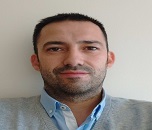
Ramon J Peláez
Institute of Optics, Spain
Title: 2D plasmonic diffractive patterns in metals by laser interference
Biography
Biography: Ramon J Peláez
Abstract
Optical phenomena related to the electromagnetic response of metals led to the development of the emerging field of plasmonics. Electron density of metal nano-particles can couple with the electromagnetic radiation and plasmons are the oscillations of the free electrons related to the formation of a dipole in the nano-particle. The progress in the manipulation and synthesis of these objects in the last years allowed us to apply these optical properties in a great variety of applications from efficient light absorption in solar cells to DNA spectroscopy detection. Today, one of the major challenges is the effective production of surfaces with customized visual color effects with direct applications in the development of personal identification systems according with the quest of the enhanced police security. Laser interference is a versatile technique for the production of 1D and 2D patterned surfaces. When applied to metal films, the laser irradiation induces the periodic dewetting of the metal from the substrate resulting in the formation of nanoparticles. These nanostructures are optically characterized by their surface plasmon resonance in the visible range, which in turn depends on the size or metal composition. Optical contrast between the regions transformed into nanoparticles and non-transformed regions (diffraction efficiency) can be tuned. In this work we report the production of bimetallic diffractive structures, with different [Ag]/ [Au] ratio and different motives within periodicities in the range between 1.7 microns to 6.8 microns. We will present experimental data showing that these regions have different diffraction patterns according with the periodic motive and the optical response of the nanoparticles. Thus, this technique allows a personalized optical signal to be encoded with a time-efficient and single-step laser technique.

